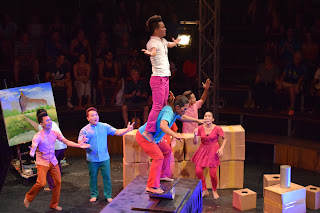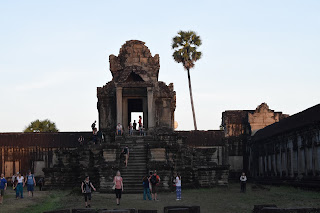Another morning, another airport. Noi Bai airport in Hanoi is clean, light and
modern – it feels a lot like Gatwick or Stansted. The Jackie Chan film Tuxedo is
playing next to the departure gate.
We’ve also been amazed at just how status-conscious the
average Vietnamese person is. A conversation with Chinh, our tour guide for our
cocktail tour of Hanoi, told us how people will gladly pay upwards or $1,000
for a second hand iPhone, just for
the kudos of owning one – and that will need to be upgraded every year.
We have mixed feelings about that film. On the one hand, it’s
always great to see Jackie Chan in a movie. But on the other hand, Tuxedo was
not a well written movie. In many ways, it reflects our experience in Vietnam –
in parts great and in parts not so great. In this post, we’ll explain our final
thoughts on this weird and wonderful country.
Glad to see the back
of backpacking?
It’s fair to say that we’re starting to suffer from travel
fatigue. Since we left Hue, it’s been a long chain of bus rides (to Phong Nha,
Ninh Binh, and finally Hanoi), checking into and out of hotels, and missing
home. Sadly, it’s definitely coloured our experience of Vietnam – where the bus
rides have been longer than most, and the damp climate has made everything a
bit uncomfortable.
Sadly, Stray hasn’t turned out to be everything we wanted
for this trip either. The tour guides have been great, our fellow travellers an
interesting bunch and most of the buses have been decent. But the company’s
motto of ‘stray off the beaten track’ has been a far cry from the truth. In
both Vietnam and Cambodia we’ve stuck to the tourist trail – all the big
cities, all the main tourist locations. And that would be fine, but we were
hoping to get to see some of the quieter places where the tourists are a
minority.
The schedule has also felt a little strange too. For
instance, in Phong Nha, Stray booked us a half day tour of a cave (caves are
the big thing in Phong Nha). It was beautiful:
But when it came to the afternoon, we couldn’t visit any of
the other interesting places as you could only visit them as part of all day,
multiple-stop tours. So in the end there was nothing to do but go back to the
hotel and catch up on our books/sleep (it was also the unfortunate day that
Georgia discovered bugs and hairs in her lunch, so in fairness it would have
taken something pretty special to save the day!)
It felt strange that Stray would organise the day that way;
perhaps they’re banking on people getting off the bus if they want to do more
on that day, but for people on a tight schedule like us (and we weren’t the
only ones) it was a bit of a disappointment.
Charming yet
chauvinistic
Don’t get us wrong – there are things about Vietnam we love.
Most of the local people we have met have been charming. And as for the places:
Hoi An was incredibly beautiful, Ho Chi Minh a welcome breath of modernisation
after Cambodia, and in Hanoi we spent a very enjoyable evening at the city lake
where local people hang out, including students wanting to practise their
English with tourists.
But it’s not all been cheap custom made suits and friendly
students. As we have mentioned before, some of Vietnamese culture we've found quite uncomfortable. Even with our limited view of Vietnamese society as tourists, the inequality between men and women is striking. More and more have we seen evidence of women working hard for their families, whilst men laze around with their friends, drinking and gambling. Also, whereas we were initially fascinated by bias and propaganda at museums and tourist sites, the more we have learnt about the country's politics the more it has depressed us. Intelligent locals have told us they feel it's best not to think too much about their political system - it's safer that way.
 |
| We were taken out for beer as part of our sunset cocktail tour. |
 |
| Of course Georgia was the only woman there - the local women are out on the street in the rain trying to sell their fruit and flowers. |
When we’ve been at the tourist attractions, dressed in our
rugged (and usually rumpled) travel gear and sturdy shoes, the Vietnamese
tourists have been dressed to the nines, in the most impractical shoes they can
find, virtually ignoring the sights in a bid to find a spot for the best selfie.
Given what we know about how this kind of pressure affects young people in the
UK, Europe and the US, we couldn’t help but wonder what this trend does to the
Vietnamese.
So when you combine our own travel fatigue with our
uneasiness about the country we’re in, it feels like it’s time for a change.
And thankfully, Georgia’s itinerary planning has a change in store for us!
Off to the beach
We’re awaiting the first of our two flights today, to take
us from Hanoi to Denpasar, Bali. We’re into the last 10 days of our trip now,
and we’ve only two stops left: one in Jimbaran, a quiet resort near the beach,
and the other in Sanur… a quiet resort near the beach. We’ll still do our best
to absorb the local culture and get out to some of the sights, but this part of
our trip is mainly about the sun, the sea, and the relaxing. After all, it
wouldn’t do to come home more exhausted than when we left!
J&g

























































